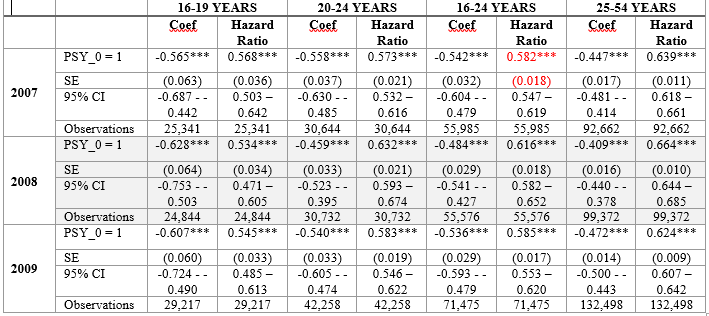I have done an analysis using Bivariate Cox Proportional Hazards Model Regression, to estimate the rate of exits from unemployment for people with mental illness relative to people without mental illness. I have done this for 2007, 2008 and 2009 (year of inflow into welfare), by age groups and gender. I am a bit confused about how to interpret the data. I am interested to know if people who commenced in 2007 (pre Global FInancial Crisis) had different exit rates than those who commenced in 2009 (in the middle of Global FInancial Crisis). Also if the patters are different for youth compared to older people. Below are the results.
Table below reports the estimated coefficients and standard errors from a bivariate Cox regression with mental illness and no other controls. PSY =1 means the unemployed person has mental illness

